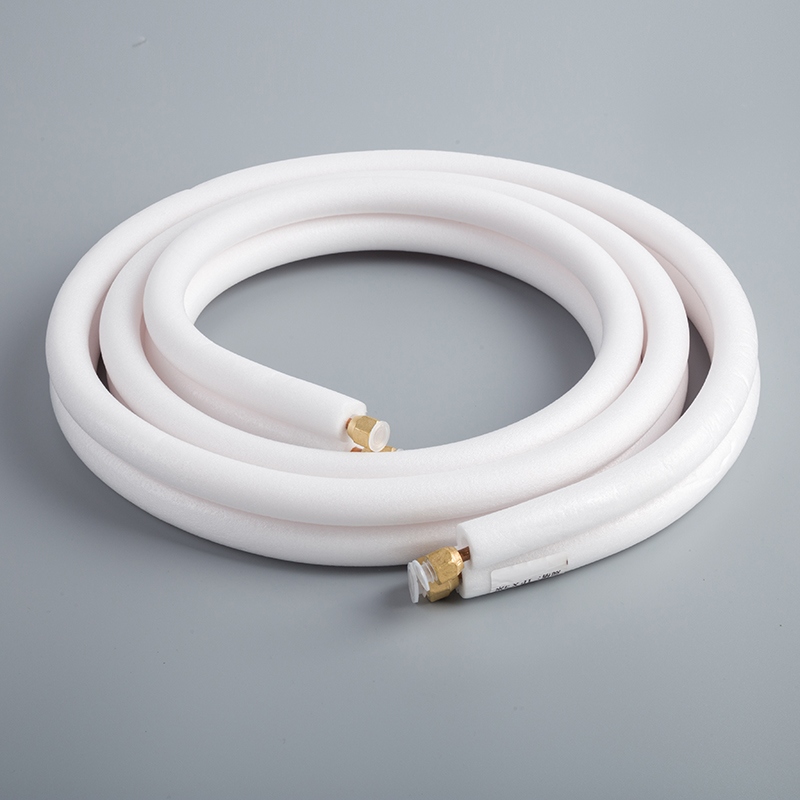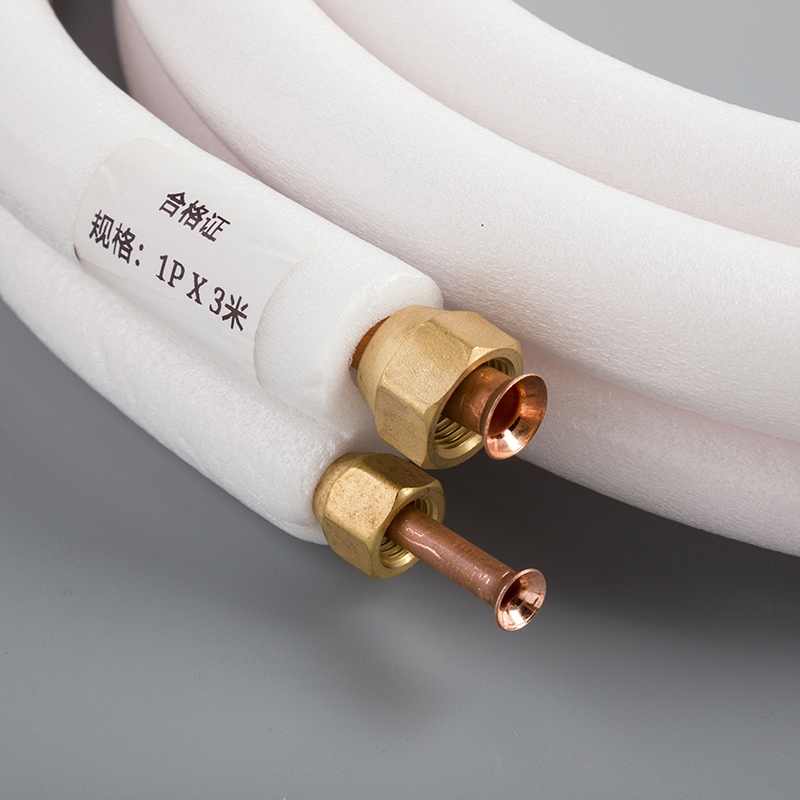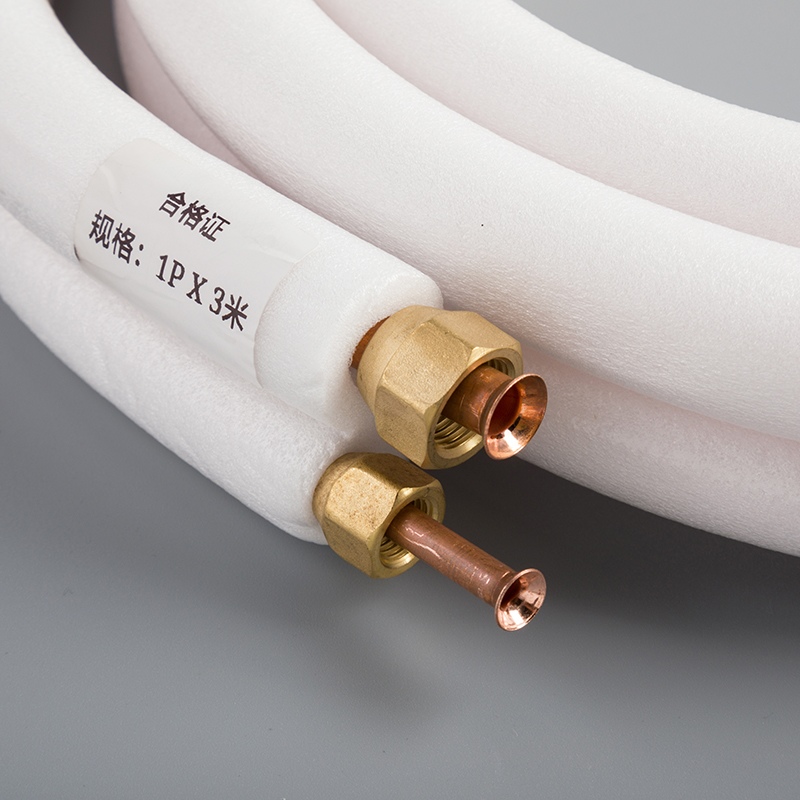Unveiling the Quality Control Secrets in Copper Pipe Coil Manufacturing

In the realm of manufacturing, scrutinize the quality control measures in modern 1/4 3/8 twin copper pipe coils manufacturing stands as a paramount pillar, ensuring excellence at every stage. This blog delves into the intricate world of copper pipe coils, shedding light on the meticulous processes that define their creation. From design scrutiny to component selection and rigorous testing procedures, each facet plays a crucial role in guaranteeing unparalleled quality. Join us on this journey as we uncover the secrets behind modern 1/4 3/8 twin copper pipe coils manufacturing.
Quality Control Measures

Design Approval
Scrutinizing the design is a critical step in ensuring precision and reliability throughout the manufacturing process. By meticulously examining every aspect of the design, potential flaws can be identified and rectified before production begins. This proactive approach sets the foundation for a flawless end product.
The approval process for designs involves a series of meticulous steps to guarantee accuracy and functionality. Each detail is carefully assessed, from dimensions to material specifications, ensuring that the design aligns perfectly with quality standards.
Component Selection
Selecting components based on stringent criteria is essential for maintaining the integrity of the final product. By adhering to strict guidelines, manufacturers can ensure that only high-quality components are utilized in the manufacturing process. This commitment to excellence translates into superior performance and longevity.
The role of high-quality materials cannot be overstated in the production of copper pipe coils. By prioritizing materials known for their durability and efficiency, manufacturers can create products that exceed industry standards. Investing in top-tier components is an investment in long-term quality assurance.
Manufacturing Process
The manufacturing process unfolds through key stages that are meticulously planned and executed. From initial material preparation to final assembly, each stage plays a crucial role in shaping the quality of the end product. Consistency and precision are non-negotiable aspects that drive every step of the manufacturing journey.
Ensuring consistency and precision throughout the manufacturing process is paramount to delivering products that meet or exceed customer expectations. By maintaining strict quality control measures at every stage, manufacturers uphold their commitment to excellence and reliability.
Role of manufacturing process audits in maintaining standards for quality and process reliability provides valuable data for root cause analysis, problem-solving, and informing manufacturing quality control about opportunities for improvement and adherence to standards.
Scrutinize the quality control measures in modern 1/4 3/8 twin copper pipe coils manufacturing
When delving into the intricacies of modern 1/4 3/8 twin copper pipe coils manufacturing, it becomes evident that specific measures are meticulously implemented to uphold unparalleled quality standards. The scrutiny applied to every detail of the process ensures precision and reliability, setting a solid foundation for excellence.
Specific measures for 1/4 3/8 twin copper pipe coils:
Thorough Design Validation: Before initiating production, each design aspect undergoes rigorous scrutiny to identify and rectify any potential flaws. This proactive approach guarantees that the final product aligns seamlessly with stringent quality standards.
Component Precision: The selection of components is governed by strict criteria aimed at maintaining product integrity. By adhering to these guidelines, manufacturers ensure that only top-tier materials are utilized, enhancing overall performance and longevity.
Stringent Testing Protocols: From pressure tests to visual inspections, each testing procedure is designed to validate the quality and reliability of the copper pipe coils. These meticulous tests serve as checkpoints throughout the manufacturing process, ensuring that only products meeting exceptional standards move forward.
Benefits of these measures:
Enhanced Product Durability: By scrutinizing every step of the manufacturing process, manufacturers guarantee that the end products exhibit superior durability and reliability. This commitment translates into long-lasting solutions for various applications.
Quality Assurance: The implementation of stringent quality control measures not only enhances product quality but also instills confidence in consumers regarding the performance and safety of the copper pipe coils. This assurance is a testament to the unwavering dedication towards delivering excellence.
"Role of manufacturing process audits in maintaining standards for quality and process reliability provides valuable data for root cause analysis, problem-solving, and informing manufacturing quality control about opportunities for improvement and adherence to standards."
Testing Procedures

Pressure Testing
When conducting pressure tests for copper pipe coils, manufacturers aim to validate the structural integrity and durability of the products. This crucial step involves subjecting the coils to varying levels of pressure to assess their performance under different conditions. By simulating real-world scenarios, pressure testing ensures that the coils can withstand high pressures without compromising their quality.
Purpose of pressure tests
The primary objective of pressure tests is to identify any potential weaknesses or defects in the copper pipe coils. By applying pressure beyond normal operating conditions, manufacturers can pinpoint areas that may be susceptible to leaks or failures. This proactive approach allows them to address these issues before the coils are deployed in actual applications, ensuring optimal performance and reliability.
Steps involved in pressure testing
Preparation: Before initiating the test, the copper pipe coils are thoroughly inspected to ensure they meet all specifications and requirements.
Pressurization: The coils are then subjected to increasing levels of pressure, starting from standard operating pressures and gradually escalating to higher thresholds.
Monitoring: Throughout the test, technicians closely monitor various parameters such as pressure levels, temperature changes, and any signs of deformation or leakage.
Analysis: After completing the test, a detailed analysis is conducted to evaluate how well the copper pipe coils performed under different pressure conditions.
Documentation: The results of the pressure test are documented for future reference and quality assurance purposes.
Inspection and Verification
In addition to pressure testing, thorough inspection and verification procedures are essential in ensuring the overall quality of copper pipe coils. Visual inspections play a vital role in identifying any visible defects or irregularities that may affect performance. Moreover, leveraging advanced technology for inspections enhances accuracy and efficiency in detecting potential issues that may not be apparent through visual examination alone.
Visual inspections
Visual inspections involve visually examining each coil for surface imperfections, dents, corrosion, or any other anomalies that could impact its functionality. By conducting detailed visual assessments, manufacturers can quickly identify and address any visible defects before they escalate into more significant problems.
Use of technology in inspections
Utilizing cutting-edge technology such as automated inspection systems or non-destructive testing methods enhances the inspection process's precision and reliability. These advanced tools enable manufacturers to conduct thorough examinations of copper pipe coils with minimal human intervention while ensuring consistent quality standards are met.
Scrutinize the quality control measures in modern 1/4 3/8 twin copper pipe coils manufacturing
When it comes to scrutinizing quality control measures in modern 1/4 3/8 twin copper pipe coil manufacturing, specific tests are implemented to uphold stringent quality standards throughout the production process. These meticulous tests not only validate product reliability but also ensure safety compliance at every stage.
Specific tests for 1/4 3/8 twin copper pipe coils:
Dimensional Accuracy Tests: Verifying precise dimensions ensure proper fitment and functionality within various systems.
Material Composition Analysis: Assessing material composition guarantees high-quality materials are utilized during manufacturing.
Leakage Resistance Tests: Evaluating leakage resistance ensures long-term durability and operational efficiency.
Performance Validation Tests: Validating performance metrics confirms adherence to industry standards for optimal functionality.
Ensuring reliability and safety:
By implementing rigorous quality control measures tailored specifically for 1/4 3/8 twin copper pipe coils, manufacturers prioritize product reliability and user safety above all else. These comprehensive tests not only certify product excellence but also instill confidence in consumers regarding the superior quality and performance of modern copper pipe coil solutions.
Documentation and Records
Importance of Documentation
Maintaining meticulous documentation is a cornerstone of quality control in modern manufacturing processes. Every detail recorded serves as a testament to the commitment to excellence and precision upheld throughout the production journey. By documenting each step, manufacturers create a comprehensive trail of accountability that ensures transparency and reliability in every aspect of copper pipe coil manufacturing.
Role of records in quality control
Records play a pivotal role in validating the adherence to stringent quality standards. They serve as tangible evidence of the rigorous scrutiny applied at every stage, from design approval to testing procedures. By meticulously maintaining records, manufacturers not only showcase their dedication to quality but also pave the way for continuous improvement and innovation.
Types of documents maintained
Various documents are meticulously preserved to encapsulate the essence of quality control measures. These include design specifications, component selection criteria, testing reports, and audit findings. Each document serves as a building block in the foundation of product excellence, ensuring that every decision made aligns with the overarching goal of delivering unparalleled copper pipe coils.
Regular Audits
Frequent audits stand as pillars of assurance in the realm of quality control for copper pipe coil manufacturing. These systematic evaluations provide invaluable insights into process efficiency, compliance with standards, and areas for enhancement. By embracing regular audits as a proactive tool rather than a reactive measure, manufacturers demonstrate their unwavering commitment to continuous improvement.
Frequency of audits
Audits are conducted at regular intervals to maintain vigilance over quality control measures. The frequency ensures that any deviations from established protocols are swiftly identified and rectified, safeguarding the integrity and consistency of copper pipe coil production. Through periodic assessments, manufacturers uphold their promise of delivering products that exceed expectations.
Ensuring compliance through audits
Audits serve as beacons guiding manufacturers towards regulatory compliance and industry best practices. By leveraging audit findings to drive corrective actions and preventive measures, companies fortify their position as leaders in quality assurance. Compliance through audits not only validates adherence to standards but also instills confidence in consumers regarding the reliability and safety of copper pipe coils.
Contractor Responsibilities
Contractors play an integral role in upholding quality standards throughout copper pipe coil manufacturing processes. Their responsibilities extend beyond mere execution to encompass a shared commitment to excellence and precision. By entrusting contractors with critical tasks, manufacturers forge partnerships built on mutual dedication to delivering superior products.
Role of contractors in maintaining quality
Contractors act as custodians of quality throughout every phase of production. Their attention to detail, adherence to specifications, and alignment with industry regulations ensure that each component meets exacting standards. Collaborating with contractors who prioritize quality is essential for achieving seamless integration within copper pipe coil manufacturing processes.
Ensuring adherence to standards
The onus lies on contractors to ensure strict adherence to established quality benchmarks during every operation. From material sourcing to final assembly, contractors must uphold uncompromising standards that mirror the manufacturer's commitment to excellence. By fostering a culture of accountability and precision among contractors, manufacturers guarantee consistent delivery of top-tier copper pipe coils.
Demonstrating compliance with customer requirements, ensuring audit readiness, and streamlining standard certification are the cornerstones of quality control in manufacturing. Layered process audits play a crucial role in achieving IATF 16949 certification, especially for suppliers to automotive OEMs like General Motors (GM) and Stellantis. Emphasizing the importance of adhering to standard operating procedures ensures that operators are aware of critical elements, fostering a culture of excellence and precision. Prioritizing quality control not only guarantees product integrity but also instills confidence in consumers regarding the reliability and safety of copper pipe coils.
See Also
Revealing the Future: Innovation in Copper Pipe Coil Technology
Exploring New Innovations in Twin Copper Pipe Coil Manufacturing
Revealing the Future: Twin Copper Pipe Coils in Construction Projects
Exploring the Environmental Benefits of Twin Copper Pipe Coils
The Definitive Handbook on Contemporary Copper Pipe Coil Methods


